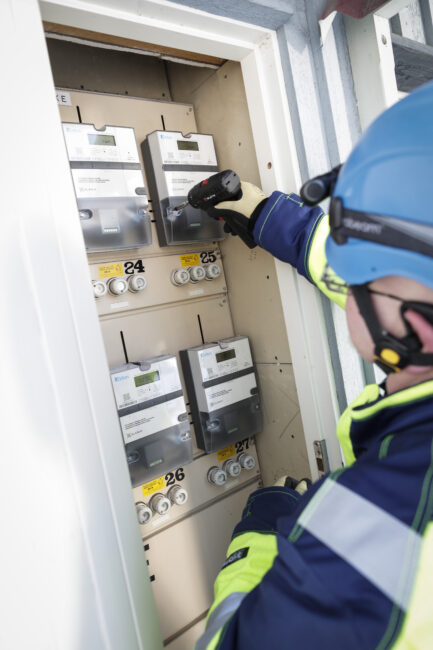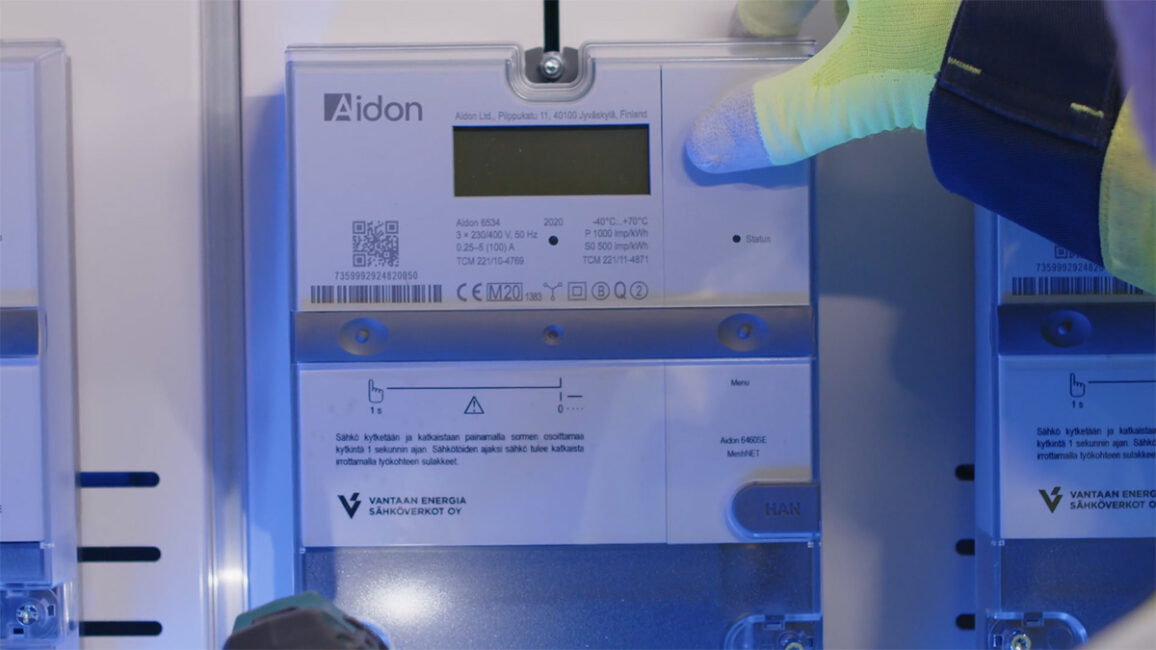

Smart meters provide many benefits to electric utilities and their customers, including:
- Net metering and variable pricing
- The ability to automatically detect and pinpoint outages for faster restoration
- Granular usage analysis
- New grid management opportunities
The catch is that all those benefits depend on a reliable wireless connection, which is often a public mobile network rather than a private one owned by the utility.
As any consumer knows, each mobile operator’s coverage can vary widely within a few blocks. That inconsistency creates a host of business challenges for electric distribution system operators (DSOs):
- If the utility’s service comes from only one operator, some smart meters will inevitably be installed where that network’s coverage is poor or nonexistent. However, the utility won’t know until the meter is installed and struggles to connect.
- Smart meters are designed to remain in service for at least a decade. Many things that affect coverage can happen over that time. For example, the operator might refarm its spectrum to roll out the next generation of cellular technology. This can change the legacy technology’s coverage and lead to some meters no longer having reliable connectivity.
The mobile marketplace also can change in ways that benefit the utility’s business model. For example, the arrival of a greenfield mobile operator or a merger of two incumbents can shake up the competitive environment. Changes like these enable the utility to get a better tariff.
However, it’s time-consuming and expensive to switch the installed base of smart meters to another operator’s network because their SIM cards must be replaced manually. That expense can erode the savings of switching operators to get a lower tariff.
Pioneering eSIMs for Smart Meters
Aidon is a leading provider of smart metering and smart grid solutions and services in its home markets in Northern Europe. The company recognized these challenges and saw an opportunity to leverage a trend in smartphones and smartwatches.
Vendors like Apple and Samsung have spent several years phasing out physical SIM cards in favor of embedded SIMs (eSIMs). These are soldered to the device’s PCB, making them virtually impossible to tamper with or remove.
This physical security is one reason eSIMs are ideal for IoT devices like smart meters. eSIMs are also more durable than traditional plastic SIMs, which is another major benefit for IoT devices that are designed to remain in service for 10 to 15 years.

Despite these benefits, only some IoT applications use eSIMs. One challenge is that to use multiple operators, a utility must have multiple versions of its smart meters, with a separate eSIM PCB for each network. That requirement increases the cost and complexity of their smart meter infrastructure.
Another challenge involves changing an IoT device’s operator without replacing the SIM card by leveraging current GSMA M2M specifications. Unlike smartphones, this task requires complex operator agreements and technical integrations. Even then, a switch might be impossible due to operator agreements and integrations.
In 2019, Aidon began removing those barriers to adoption by developing the world’s first eSIM solution for smart meters. It enables utilities to make over-the-air (OTA) operator profile changes to installed smart meters. This capability provides utilities with the freedom and flexibility to switch networks if coverage is weak or if another operator offers a better tariff. It also helps future-proof the smart meters because they’re not locked to a single operator.
The eSIM solution lets DSOs choose how they want to offer smart meter services. One option is to use Aidon’s metering as a service (MaaS), which provides all necessary hardware, software and services. Alternatively, they can purchase all the components — such as smart meters and the head end system — and choose a mobile network partner.
In 2021, Aidon’s new 7000 Series meter and MaaS solution made their commercial debut at Elenia, Finland’s second-largest DSO. Today, many other utilities in Northern Europe use Aidon’s metering and service platform, benefiting from the flexible choice and change of mobile operator thanks to eSIM.
Aidon’s pioneering work also helped lay the foundation for the new GSMA eSIM IoT specification (SGP.32), which extends the consumer eSIM model to smart metering. The standard, released in 2022, defines uniform interfaces between operators, service providers and device manufacturers related to operator selection. SGP.32 is designed for devices such as remotely readable meters, which don’t have a user interface to enable operator switching.
The Telit Cinterion Advantage

Aidon turned to its longtime partner, Telit Cinterion, to help develop an industry-first eSIM solution for smart meter applications. This solution would be compatible with future eSIM standards like SGP.32. Telit Cinterion’s role included providing:
- A prestandard GSMA eSIM IoT specification (SGP.32) SIM provisioning solution (connectivity activation) with global cellular bootstrap for OTA SIM activation in a factory or during installation
- Connectivity fallback solution leveraging a global cellular bootstrap for long-term in-field recovery in case of connectivity outages
- Global LTE Cat M and NB-IoT EXS62 module with embedded industrial-grade eSIM and integrated LPAd for SIM provisioning
- SaaS portal for activation code import and storage, management of SIM provisioning rules, and dashboards for visualization of SIM provisioning status
In addition to eliminating operator lock-in, these capabilities enhanced Aidon’s cloud-based managed service portfolio. For example, the Nordic utility market now takes readings every 15 minutes. Aidon can meet that and other SLA requirements because their customers’ smart meters always have access to the network with the best coverage.
“We are thrilled about the revolutionary eSIM solution we have created with Telit Cinterion. This promotes the openness of Aidon’s end-to-end solutions and our ability to bring innovations to the AMM domain.”
— Petri Ounila, Director IoT Devices, Aidon
